We don’t really understand how far our words and actions might travel. How is it possible for the world’s first astrophysicist named Johannes Kepler, to have predicted in the year 1603 that his allegorical story about a moon trip would lay the basis for future science fiction? How is it possible for the first American female astronomer Maria Mitchell, to have understood that she would turn into an icon for women in the sciences when she was just basically chasing her passion?
The reality is that our lives echo long after we’re gone, ringing out in numerous ways. In these book chapters, we’ll go with these echoes and look at the lives of a few historical people, and find out how they interweave in often astonishing manners.

Chapter 1 – The destinies of humans are interwoven, across space and time, in an ever-growing web.
If you imagine your personal life story, and the life story of other people, as straight paths, just heading forwards, then you got the incorrect notion. As a matter of fact, our lives, as well as collective histories, branch out in various different ways, in an extremely connected web. We intersect with others and things in unthinkable manners.
One of the causes why we disregard this complicated web is that we do not remember how all of us are basically connected. All the things present in the world consist of the same star-stuff. All the things. From all concepts that Albert Einstein invented to the preservatives that made his brain floating in its jar. From all the cells of Galileo’s pointing finger to the molecules of gas and dust that make the rings of Jupiter. From Beethoven’s opening notes of the fifth symphony to the sound of the voice you like. 13.8 billion years ago, all these things exploded into being with the Big Bang, from one origin.
If all of us understand this vital fact, what is the reason why we consider ourselves as totally distinct, separate, atomized? For example, some of us got really engrossed in personal growth that we fail to remember that we are also in vital manners by other people present in our lives as well. Certainly, Walt Whitman, the poet understood how connected we are to one another when he wrote: “all the atoms belonging to me as good belongs to you.”
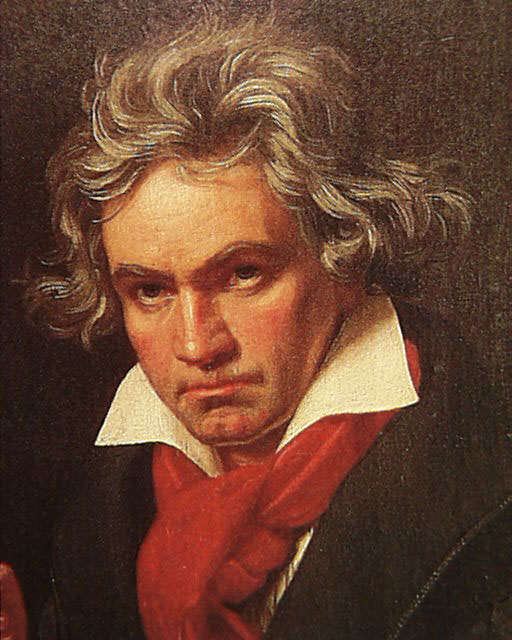
In philosophy, science, and art, our great concepts and developments, didn’t evolve individually; however, they evolved through great webs of connectedness. A lot of these connections are not visible and hardly traced.
For example, the stories of satirist Lucian of Samosata, from 2AD Roman Syria on prototypical “science fiction” may have pervaded Western awareness and set in train reflections about moving to outer worlds, in lots of various minds. Maybe, eventually, these reflections ended in real space travel.
A lot of the concepts that flourished into revolutions or modifications of knowledge first occurred in obscurity, developing over numerous eras, between various disciplines. They ultimately formed a great torrent through the collection of individual drops of water along various channels
This is best demonstrated by the struggles for equality between classes, genders, sexualities, and races. Inventors such as the early abolitionist Frederick Douglass or first American astronomer Maria Mitchell incited movements that, over the course of history, added to a great transformation, impacting causes far beyond their own.
Chapter 2 – Johannes Kepler shaped the future with his scientific innovations and his science fiction.
The work and life of the world’s first astrophysicist Johannes Kepler is outstanding in its own way. However, the manner the work he did during the 1600s would associate with other scientists and writers over the next centuries is so extraordinary.
The astronomical findings of Kepler fed into the future of lots of various scientific fields. During the time of prevalent illiteracy and superstition, Kepler was one of the first believers of Copernicus’s heliocentric model of the world. He added significant understanding to the field of astronomy. For instance, Kepler was the first person to propose that the planets orbit the sun, and not in circles; however, in ellipses, he was the first to form a scientific way of predicting eclipses and Kepler was also the first person to show that physical forces move the planets and star countless ways through the night sky.
After Sixty years, Newton proceeded to improve Kepler’s thesis on physical force to form the basics of Newtonian gravity. So, centuries after, Katherine Johnson a mathematician used the laws that were first invented by Kepler. She made use of these laws to estimate the trajectory that put Apollo 11 and the first man on the moon.
Extraordinarily, although it happened a long way into the future, in his “science fiction”, Kepler predicted that moon landing. In Kepler’s story titled The Dream, a young astronomer journey to the moon and finds a race of lunar inhabitants who assume that Earth orbits their planet. The story is a soft, symbolic manner of telling the dwellers of Earth that their truths about their own planet’s place in the work might not even be the truths.

The work of Kepler’s was one of the first science fiction stories even before the genre came into existence. However, he also precisely forecasted that a “spaceship” would require to consider the gravitational field that would weigh it down to Earth when it leaves; however, it would need barely any force as soon as it is in the gravity-free “aether” of space.
In thinking of the concept of lunar travel, Kepler activated the forces that would ultimately make it happen. Centuries after, during a conference that was held in the year 1971 on space exploration, Ray Bradbury an American author stated this historical development process when he mentioned that: “It’s part of human nature, to begin with, a romance and proceed to a reality.”
Chapter 3 – The exceptional way Maria Mitchell was brought up and her environments made her become America’s first female astronomer.
Maria Mitchell was born in 1818 on the island of Nantucket to a family of Quakers. Maria Mitchell was a clever kid fascinated by the cosmos. However, during the 1800s, men were still dominating science. Mitchell had to fight a difficult battle for her to turn into a real astronomer
However, on the evening of the 1st of October in the year1847, she discovered something that would change her life. That night, while she was checking the heavens with her cherished telescope, she saw a small, brilliant speck moving in the sky – a new comet! She was really familiar with cosmos and she’d never seen this bright small invader before. Earlier on in that same year, Europe’s chief patron of the sciences, the King of Denmark, had declared a reward for anybody who found a new comet. The winner would be given a gold medal that worth 20 ducats – back then, that was a fortune.
Initially, Mitchell was hesitant to claim the medal; however, her father urged her to send her findings to the Harvard Observatory, the prize-giving authority. But, as a result of stormy weather, they were delay in the postal service and before they could get her letter, an astronomer in Europe as well saw the comet. Luckily, the authorities were really kind to give Maria the medal.
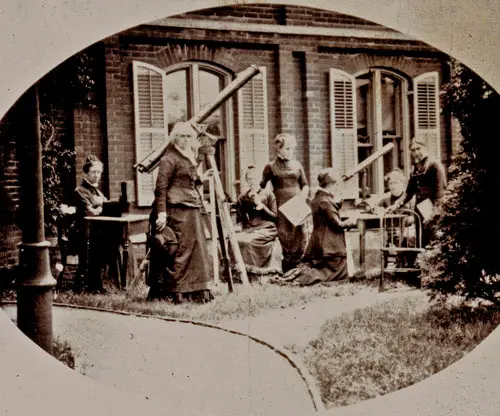
Maria would proceed to be the first female astronomer in America, she was also the first woman to get admission into the American Academy of Arts and Sciences as well as the first woman to be hired by the government for a specialized non-domestic ability – as a unique “human calculator” for nautical aims.
Her upbringing and family hugely contributed to Mitchell’s achievement. She was really fortunate to be raised in a rarely caring family, with a well-educated mother and a barely present father. All of these were untypical for the time. Her father handled her as a knowledgeable colleague and entertained all the curiosity she had while being really forward-thinking not to privilege his talented gifted sons. Also, as Quakers, the same education of both genders was insisted upon.
Lastly, being raised on seafaring Nantucket entailed staying in an area where mathematics was a practical requirement for sailors and whalers navigating the Atlantic, not just a lofty knowledgeable interest. Also, Maria had lots of time to develop her hobby in astronomy indoors during its long and dreary winters. The unique way Mitchell’s was brought up and her environments tell us that nobody is a completely “self-made” person –we are all shaped by a complicated web of family, environment, and culture.
Chapter 4 – Across the eras, a lot of people of genius have though of beauty to be related to the truth.
Elizabeth Barrett Browning who was the 19th-century poet believed that there were various kinds of beauty: in the arts, definitely; however, in physics and in morals as well. All these were reflections of a vital fact about the world. A lot of people have shared this belief all through the eras.
Galileo, as well, was a person who viewed the fact he discovered in his science to be beautiful. He disproved the dominant geocentric prototypical of the world that belied that the God-made Earth was at the center of all things.
While Galileo was watching the various phases of Venus, he found out the first proof against the unscientific belief of the time. If the dominant view had been right, that means Venus could not be lightened from the vantage point of Earth, as that would have set in on the far part of the sun. However, with Galileo’s telescope, he could see Venus all illuminating in dark space. Also, demonstrating such a strong, controversial fact, he saw the planet more beautiful.

Also, the association between beauty and reality was shown by Ralph Waldo Emerson, the 19th-century American poet. During his lectures on the matter, he claimed that beauty naturally entices curiosity and marvel, tempting us to ask about what is underneath its surface. He thought of beauty as a thing related to a language – a code for communicating reality, as essential to the world as mathematics or physics.
Maria Mitchell, who we talked about in the former chapter, went to Emerson’s lectures. At times, she as well believed that she was attracted to look at the universe in pursuit of its scientific fact essentially due to the fact it was really beautiful.
The connection of beauty and truth can be seen in the struggles for social justice as well. For example, consider Frederick Douglass, the popular abolitionist. During the 1860s, he gave a lecture titled “Pictures and Progress”, which looked at the connections between figurative art and political reform.
Douglass claimed in the lecture that the rising medium of photography would assist change the situation of inequality since it let people present the “real” in contrast to the ideal. Photography could make visceral the difference between our defective reality and the one we seek for. Douglass found a new type of beauty in this power – a power that would incite us into making a move.
Chapter 5 – All through history, the reality of people’s amorous natures has usually been more complicated than the labels placed on them.
During the 19th century, people who were thought to be in “irregular,” non-heteronormative relationships were at times referred to as “Uranian.” This term was gotten from the name of the Greek goddess Aphrodite Urania, who was formed from the god Uranus’ testicles, Uranian referred to a person of the “third sex.” Nowadays we’d know people labeled by this word, generally speaking, as strange.
But, due to past strictures, a lot of people all through history have hidden their natures from other people and even from themselves as well. History has a lot of relationships that were never somewhat understood, or defy easy definition.
The authors Herman Melville and Nathaniel Hawthorne had a connection of this kind. Reading the collection of Hawthorne’s short stories “Mosses from an Old Manse in the Literary World” during the year 1850, Melville grew fascinated with the older writer. Reviewing the book, Melville wrote: “A man of a deep and noble nature has seized me…” Melville was captivated with the work of Hawthorne’s and, by extension, the man himself, whom he’d met at a literary meeting not long before.
From Hawthorne’s part, he too was attracted to the younger writer and was really touched when Melville dedicated the novel he wrote, titled Moby Dick, to him. However, the relationship deteriorated when the letters Melville wrote to Hawthorne became very feverish.

His zeal was a lot for the more reserved Hawthorne, who started to pull out. The warm discussion and mutual respect between these two men are maintained in their letters they wrote to each other, and what occurred between the both of them can be referred to as a kind of romance; however, we’ll never understand if the age and convention kept it to this, or if there was another side to their story.
Maria Mitchell’s profound connection with Ida Russell, the society’s beauty was undefinable as well. Mitchell had an extremely quiet nature and her personal bonds looked to have been kept on a strictly friendly level. But, her rapport with a beautiful, intelligent socialite named Ida Russell, was different.
Different from a lot of her other female friends, Ida stirred possessiveness and jealousy in Mitchell, personalities that are not usually her kind of person. However, apart from the clear attraction to Ida shown in Mitchell’s letters, no one understands what occurred between both of them. Just like a lot of people of their era, the exact shape of their relationship was unclear, as convention prohibited a more open association.
These instincts – Melville’s, Hawthorne’s and Mitchell’s – are what we might refer as to now as queer. A lot of intelligent people all through history have developed that kind of strange, mutually inspiring and extremely rare relationship with one another. One thing is sure: the difficult business of intimacy can’t be summarized in a word such as “queer” or “Uranian.”
Chapter 6 – The mathematical genius Ada Lovelace personified the joining of literature and science.
Ada Lovelace who was the child of the Romantic poet Lord Byron and a mathematically intelligent aristocrat, Baroness Annabella Milbanke was given birth to in the year 1815.
Although the marriage of Byron and Milbanke’s didn’t that long; but, after it was discovered that Byron was sleeping with his half-sister, Augusta. Byron ran away to Italy, and afterward, he went to Greece.
Ada’s mother was the one that raised Ada, who discouraged the poetical aspect of her nature and drove her towards the field of science and math. Ada was a fast learner. When Ada became a teenager, she’d already created an idea for engineering a flying apparatus. But, her mother couldn’t remove her poetical part completely, which was an equal side of her.
Ada’s father was far away in Greece; the great English poet of his era and at times he would take a portrait of her and breathe deeply, thinking if Ada would ever get to know him. Back in England, Ada felt the same thing too. In about of disobedience, she said to her mother: “You will not allow me philosophical poetry. Reverse the order! Will you offer me poetical philosophy, poetical science?”
It was this unwillingness to surrender the double nature that prepared her for her life’s great accomplishment. When Ada was 19 years, she started going to salons held by Charles Babbage, an eccentric mathematician. Immediately after they met each other, Lovelace and Babbage started working on a thing known as the “Analytical Engine”, something that is commonly seen as the first computer in the world.
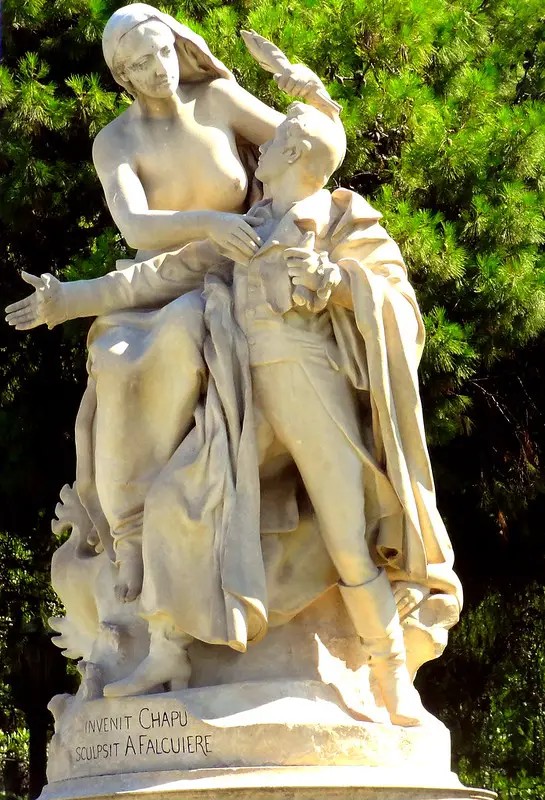
During their teamwork, Lovelace interpreted a scientific paper that was written by an Italian military engineer titled “Sketch of an Analytical Engine.” This paper was written in her 65-page long footnote, basically, that was the world’s first computer program. The year was 1843 and she was just 27 years of age. The feat comprised of Ada Lovelace’s world-class gift for mathematics – in the formulae she formulated– and her imagination. With the absence of this latter element, the capability to see things that are not yet in existence, it is unlikely that she’d have thought of that kind of radically revolutionary discovery.
Her skill to invent combined with her mathematical intelligence– the parts she’d gotten from both of her parents – and added to this step forward for science as well as humanity.
Chapter 7 – Goethe left an astonishing scientific legacy behind.
The popular German poet Goethe thought of himself as a scientist too. Just like a lot of the other people we’ve encountered so far, the two sides of imagination and reason joined to create Goethe’s genius. Even though he left his mark primarily in the field of literature, his scientific legacy is astonishing.
For example, he is somewhat accountable for the names of clouds we make use of nowadays.
When a young amateur astronomer known as Luke Howard, published a classification system for clouds with Latin terms rather than English terms, he was faced with raging disapproval by the British scientific institution. Goethe, who understood scientific growth well, supported the young Englishman, claiming that clouds were prevalent to everybody and are worthy to have names recognized in every language instead of “local translations.”
Also, he used some of Luke Howard’s essay in a list of short poems that utilized the Latin terms he had assigned to them. With Goethe’s strong support, these names lived like the ones we make use of now in the entire world: cumulus, stratus, cirrus and so forth.
But, in spite of his interest in science, that wasn’t the real profession of Goethe’s. Goethe was a scientist just like how Einstein was a violinist – zealous however mediocre. His important accomplishment, if not as a scientist, was as a person who spread science and expanded the imaginations of scientists. Certainly, although part of the scientific essays he wrote while he was alive was imperfect, he used interest in areas where aesthetics and science united.
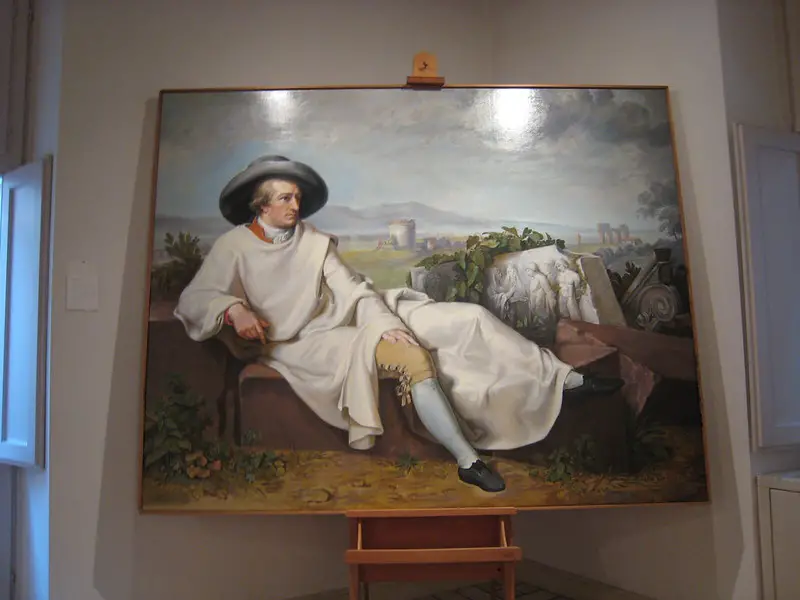
One of the most popular illustrations of his scientific legacy can be seen in an invention by Nikola Tesla. While Tesla was sitting in Budapest at the Budapest Park, he was shown in a vision the concept of the self-starting alternating current motor–nearly a hallucination. The sky lit up while he sat in the park with a wonderful sunset, which motivated him to read a stanza from Goethe’s Faust. As he mentioned the lines, all of a sudden, he got a vision of a rotating magnetic field, a vital piece of the motor he created.
In Goethe’s life, he criticized what he regarded as the restricting separation between poetry and science, in an essay on forms. Upset by the manner at the two fields had been divided by the scientific and literary establishments, he stated that “the two can join once more on a higher level as friends.”
Chapter 8 – Even the greatest scientific minds are susceptible to the mystical in the face of death.
In the year 1988, when James Gleick was writing his biography of Richard Feynman, he found a letter that upended the dead physicist’s public identity. The universe had regarded Feynman as a rationalist insusceptible to unreason; still, the letter showed an entirely new, sentimental aspect to the sober scientist. In order to know its origins, we have to go back to Feynman’s youth.
While Feynman was a teenager, he had fallen in love with a girl known as Arline, who was as zealous about philosophy as he was passionate about math. They thought of a life of happiness together.
However, Arline started to have a strange sickness. A lump showed up on her neck and she had fevers. She got better for a short while; however, the sickness came back. To Feynman’s terror, medicine, an aspect of science he’d put a lot of hopes in for a long time couldn’t discover anything to assist Arline. Eventually, her sickness, an uncommon type of tuberculosis, was found to be terminal. Shattered, the couple chose to get married in an unplanned service, achieving what they imagined of for long.
As World War II got to its peak, Feynman, who’d turn into one of the country’s famous physicists, was hired to work on the Manhattan Project that made the first nuclear weapons.
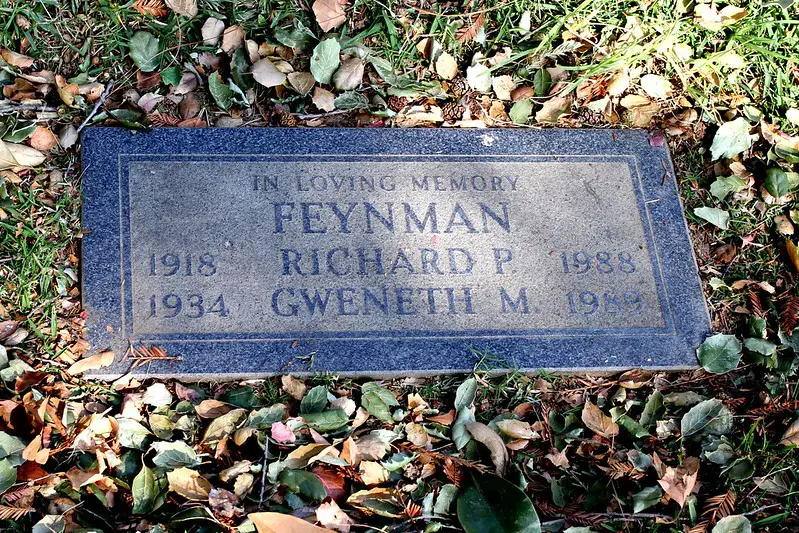
Arline, wrote love letters to Feynman from the hospital in difficult code to make him laugh. Their romance stayed like this, till the very end. On the 16th of June 1945 was when Arline died. That was when Feynman – a fastidious rationalist who’d been upset at times with Arline’s zeal for metaphysical theories that permitted God –became the “irrational.”
He wrote the letter that Gleick found out all those decades after. It was addressed to Arline after she died. In the gorgeous, poetic address, he talks to her as though she wasn’t dead and attempts to predict her reply. It’s not the work of the skeptic that everyone was aware of; however shows a person who, with a scientist, desired with his whole heart for a thing greater than the precision he filled his life with.
In the letter, he wrote: “I have come across a lot of girls and really nice girls…however… all of them seem like ashes. You are the only one left to me. You are genuine.” Just like a lot the people we’ve reflected on here – astronomers, inventors, poets – he was shocked by the mystery of life.
Figuring by Maria Popova Book Review
A lot of important historical people have left legacies behind that branch out in astonishing, unexpected means, linking with other people from various fields, places, and times. At times these connections have brought about great cultural transformation, to key scientific findings and revolutionary innovation. From astronomers to poets, political activists to creators, the driving force that links the great minds of history is their common search of beauty and fact.
